You’re in a rush, the weather is terrible, and you need that one piece of clothing to make your outfit pop. So what do you do? You throw it in the dryer of course! Or do you?
No doubt there’s plenty of us who have been in that exact scenario, and have often paid the price of throwing a piece of clothing in the dryer, only for it to be ruined in the process. But how could this all be avoided? Well, you can always read the label, or you can continue reading this Canstar Blue guide as we look at what fabrics are dryer-safe, and which ones you should throw on the clothesline instead.
What fabrics are safe to go in the clothes dryer?
There are a number of fabrics that are safe to be placed in the dryer, including acrylic, cotton, denim, linen, microfibre, nylon and polyester. However, it’s always best to read the label of each particular clothing item before putting in the clothes dryer to avoid damaging any of your favourite pieces.
Can acrylic go in the dryer?
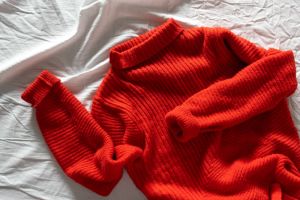
Acrylic is a lightweight synthetic fibre used as an alternative to wool or cashmere and can be predominantly found on warm clothing options such as scarves, gloves, tracksuits, and sweaters. Consumers can buy 100% acrylic clothing or can find acrylic options blended with wool or cashmere for a cheaper winter option.
Due to its synthetic properties, acrylic clothes can be put through the clothes dryer, although you’ll have to use a low temperature cycle, as acrylic will permanently wrinkle if the temperature is too high. Similarly, you’ll be left with wrinkles if you leave your acrylics in the dryer after the cycle has finished, so be sure to grab them out as soon as you can.
If you do accidentally leave the clothes in a dryer and suffer a few wrinkles, you can use a clothes iron on a medium setting to save the day, although it’s best to check the label before you get stuck into the ironing. Acrylic is also moth-proof, meaning your wardrobe won’t suffer during the storage season.
Can cotton go in the dryer?
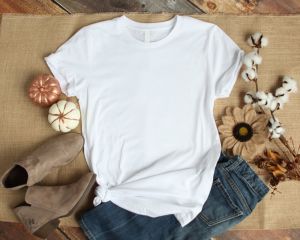
Cotton is a natural fibre, grown on cotton plants, and is one of the more popular options for clothing materials. Often spun into yarn or thread, cotton is used to make soft and ‘breathable’ clothing, handy for climates where the weather changes multiple times a day. Cotton can also be found in bedding, as well as alongside synthetics such as polyester to create a wide variety of items.
Does cotton shrink in the dryer?
While cotton clothes are common, you’ll have to be careful when it comes to drying, as 100% cotton clothes may shrink if put in the dryer, although most cotton blends should be able to survive the drying cycle shrink-free. If you’re unsure, or worried about a particular item, it never hurts to check the tag for drying instructions.
Can denim go in the dryer?
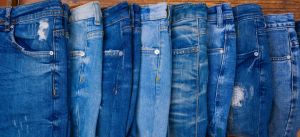
Made from cotton, denim is a sturdy fabric, handy for both casual Fridays and to take for a night on the town. Denim fabrics can be put into the dryer, but for optimal care, take them out just before the end of the cycle and leave them to air dry, as they’ll keep their shape for longer. Use a low heat and delicate cycle if using a tumble dryer, as well as low heat if you have crinkles to iron out.
Can linen go in the dryer?

Made from the fibres of the flax plant, linen is often very absorbent and used for towels, bedding as well as a variety of clothing options. As a natural fibre, linen can be easily blended to give consumers plenty of options when it comes to fitting out the bedroom or the wardrobe.
When it comes to linens such as towels and sheets, chucking them in the dryer is an easier option for many, especially in the colder months. Depending on the blend, most linen options will be dryer safe, although tumble drying may impact the lifespan of the linen. For other types of dryers, linen will be safe at a low temperature but is also easily crinkled.
Linen clothing is a different story, however, with many recommending linen clothing to be professionally dry cleaned or air-dried to avoid shrinkage and creasing.
Read more: Clothes Dryer Buying Guide
Can microfibre go in the dryer?
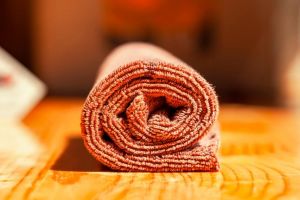
A synthetic fibre that gets its name from being smaller than a strand of hair, microfibre is typically made from polyesters and polyamides such as nylon. Traditionally, microfibres are used to make mats, knitwear, cleaning dusters, upholstery and specialised clothes such as cycling jerseys.
When it comes to drying, microfibre-made clothes and covers should be fine, as long as you set the dryer to a low temperature, as microfibre dries quickly in comparison to other materials. It’s also recommended to dry with other microfibre products to prevent lint from building up.
Can nylon go in the dryer?
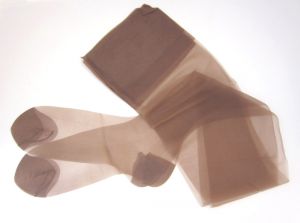
A versatile synthetic, nylon was traditionally used for stockings, before nylon and nylon blends expanded into a variety of clothing items and varieties, including the popular activewear range. Nowadays, 100% nylon products are less common, with cotton, polyester and spandex now used in conjunction with nylon for comfort.
Most nylon products will be clothes dryer safe, but to be sure, check the labels before you throw them in the machine. As nylon dries quickly, it’s recommended that nylon is put through a low temperature cycle, as well as grabbed out of the machine as soon as possible, as it can be damaged if left in too long. Nylon also builds up static cling, so be sure to dry with a dryer sheet to avoid getting zapped.
Can polyester go in the dryer?
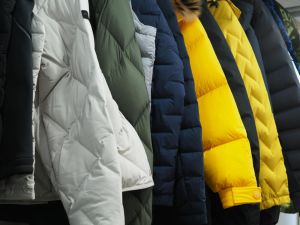
One of the most common synthetic fabrics available for clothes, polyester is often used with a variety of blends to create home furnishings, apparel, blankets, and all types of clothes.
Polyester is quick-drying, so you may not even need to use a clothes dryer, but for peace of mind, you won’t ruin your clothes if you do use a machine. Using a low temperature cycle will also avoid any possible damage or shrinkage. Polyester also builds up static cling, so a dryer sheet is also a handy addition to the cycle.
Old dryer ruined too many of your clothes? Check out what else is out there.
What fabrics shouldn’t go in the clothes dryer?
While the technology of clothes dryers has improved dramatically since their introduction to Aussie households, there’s still a number of fabrics that aren’t suitable to be placed in for a spin, including:
- Cashmere
- Lace
- Leather & Suede
- Rayon
- Silk
- Spandex
- Wool
Cashmere
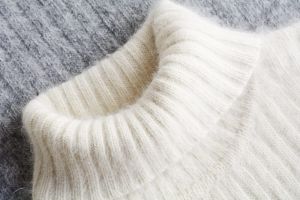
Finer than wool, cashmere is often stronger, lighter, and softer than sheep’s wool, making it ideal for cooler weather or those sunny days with a bit of a breeze. Similar to wool in terms of production, cashmere isn’t suitable for the clothes dryer, as the heat will shrink or damage the follicles, making air-drying the best option available.
Lace
Often eye-catching, lace has been used over many years for a variety of uses, including clothing, cutwork, and knitting. Made from yarn or thread, lace is very delicate and is often blended with cotton, linen, and other synthetic fibres for different designs and pattern varieties.
As it’s delicate, air drying is the recommended method for drying lace, as machine drying will likely damage or unthread the design, leaving you with a mess at the end of your drying cycle.
Read more: How much electricity does a clothes dryer use?
Leather & suede
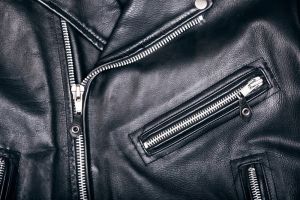
Made from animal rawhides, leather and suede are common fabrics, although there are also blends and synthetics available. Due to the complexity of the production process, leather and suede can be tough to clean, with machine drying not recommended as it will likely damage and/or discolour the fibres. If you need to dry either leather or suede, air-drying is your best option to keep your clothes looking fresh.
Rayon
Manufactured from natural wood fibres, rayon is often used to imitate silk, wool, cotton, and linen through an extended manufacturing process. There are multiple types of rayon, so it’s best to check the tag before you look to clean and dry any rayon clothing.
Generally, rayon isn’t suitable for the clothes dryer, as the fibres may shrink and fray when heated, so laying out any rayon clothes to air dry is the best option.
Silk

Silk is a natural protein fibre, predominantly extracted from silkworms, with the end product a soft clothing option to help spice up your wardrobe. Due to its delicate nature though, silk is not dryer-proof, meaning you’re best to either air dry or use a dry cleaner to ensure your silk items are kept intact. Some silk blends may be able to survive a drying cycle, although it’s best to check the tag beforehand.
Spandex
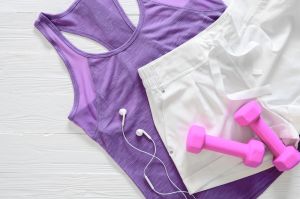
Used for a variety of sporting attire, as well as swimsuits and compression wear, spandex is often mixed with cotton or polyester to be comfortably worn on a day-to-day basis.
As spandex is often mixed with other fabrics, you’ll have to check clothes tags before you throw them in the dryer, as some spandex clothes may be fine to dry, while others are best hung out to dry. Generally, the more spandex your clothes contain, the more damage can be done.
Wool
A textile fibre sourced from animals such as goats and sheep, wool is a popular wintertime option for many due to its thick follicles. Most woollen items should be air-dried to protect them from being shrunk or damaged, although it’s best to set aside some time to ensure they’re dried properly.
Some woollen blends will be fine to run through the dryer on a low heat setting, although it’s best to check the tag before you decide to wash.
Other things you shouldn’t put in the dryer include oily or chemical-stained items such as work rags, as the heat from the dryer could potentially start a fire, with clothes that are sequined or beaded also best to air-dry to ensure that the beads and sequins stay put, as the dryer may melt any glue holding the garments together. And while it may be tempting, it’s best to also not put your shoes in the dryer either, as the heat may damage the soles.
Is it better to use a clothes dryer on a lower heat?
While putting the clothes dryer on the highest heating setting may seem like the best option, it may also be the most damaging, as the higher heat can potentially cause the fabric to weaken or alter, potentially ruining your favourite outfit.
As a result, if you’re looking to keep your clothes around for the long-haul, putting your next load on low heat can help reduce wear and tear, while getting the job done. If you’re still not sure about which setting to use, it’s also best to look at what the clothing tag recommends.




Share this article